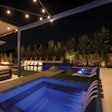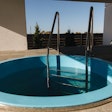When it comes to promoting, selling or creating awareness of your products or services, there's no such thing as receiving too much publicity. So, if you happen to land some coveted .oor space at a well-attended industry show, media opportunity might be yours for the taking. The question of course is: How do you attract that sought-after coverage and how do you make it work to your advantage?
For starters, don't be fooled into thinking attracting coverage guarantees receiving coverage. Attracting coverage at many shows is actually the easy part, especially if the event — for example the Philadelphia Flower Show — is a hometown favorite that appeals to thousands of people. Just because reporters are floating about, doesn't mean they'll .oat your way.
Generally, most reporters — especially broadcast reporters — who cover trade shows have little if any direction. Assignment editors looking for time and space to fill typically point reporters in the direction of the venue with seemingly explicit instructions such as "See what you can come up with," or "Maybe you can find something new and interesting." Depending on the time of year, reporters may be assigned to tie their reports into a holiday or season. If a show features jewelry, the reporter might be assigned a story on what types of jewels people are buying each other this holiday season. If the floor features the latest in high-tech gadgets, reporters will be looking for new or unique items that their audiences haven't read about before.
Edward Segal, author of How To Get Your Fifteen Minutes of Fame and More, says that while trade shows are some of the best opportunities for leveraging coverage, there is so much competition that it's increasingly difficult to stand out. He advises people to: "stop chest thumping and start realizing that reporters don't care about you . . . they only care about how your product or service helps their audience."
Still, there are ways to generate the ink you think your company, service or product deserves.
DON'T WAIT UNTIL SHOW TIME
Show organizers plan in advance, and so should you. If you have a cool gadget, interactive media display, or plan to announce a new product, let organizers know in advance. When a reporter pops in and is looking for something visual or innovative, they might point the person in your direction.
NOT EASILY IMPRESSED
Reformatted brochures or slick annual reports do not tell your story in a reporter-friendly format. In fact, they are more likely to inspire a good nap. On the other hand, your press kit does not need to arrive festooned with balloons and beach balls. The balls and balloons might get batted around the newsroom for a while, but that won't guarantee coverage. Your kit should tell your story, provide key information and include your booth number, media contacts and phone numbers.
THINK BENEFITS
Not every product at a trade show is a media magnet. For example, buckets of chlorine on display at the home and garden show might interest an industry publication, but not generate much interest among mainstream media. Yet, if the latest in sanitizing chemicals meant the water was forever balanced, never had to be adjusted and made swimmers smarter, your pitch would likely score more attention among consumer media.
VICTORY WITH VISUALS
Reporters need visuals. Put photographs, displays or posters up at your booth so they can see what you're talking about. If you're handing out photos, make sure they are high resolution, available in various formats and can be accessed on your company Web site for reprint. Include short captions and photographer credits. If a reporter is attracted to your booth, visuals increase attention and provide a backdrop for interviews.
Too often however, businesspeople focus very heavily on capturing media attention but find that they have no plan for how to benefit from their fifteen minutes of fame. As a reporter, I've walked away from many a trade show staffer who talked a lot about his company but could not simply explain how his product would benefit or improve the lives of my viewers.
For example, do you know what "multiple, heterogeneous operating system versatility" is. I didn't think so. I didn't know either. But not too long ago I worked with an executive who described his company's product in those exact words. That may work for an engineering magazine, but drowning reporters in jargon is a publicity death sentence. If the executive said, "Because we can securely handle thousands of data transactions on a single server, our customers benefit from incredible computing power, more efficiency, reduced costs and can spend more time concentrating on their businesses," he'd have a better chance of generating interest.
By failing to recognize the importance of training staffers and spokespeople, organizations risk losing an opportunity to leverage coverage. A good spokesperson understands how to quickly and effectively position his product or company. A bad spokesperson can sabotage a multi-million dollar public relations campaign in a matter of seconds.
MEDIA TRAINING
If your employees aren't media trained, keep them away from the trade show. They need to know what reporters want, dos and don'ts of interviewing and how to develop a short, attention-grabbing description that they can share with almost any audience. Don't refer reporters to a PR person back at the office. If they walk away, chances are they're gone for good.
FOLLOW UP
Don't assume reporters will call you to follow up. Give them a couple of days and then call to find out if they need additional information, pictures or interviews. Reporters hate to admit this, but the easier you make their jobs, well, the easier their jobs are. And who doesn't like that?
Finally, ask the right questions. Take a moment to find out whom you're talking to, what they cover and what would interest their audiences. Then, try to become one of those readers. When you learn to speak from an audience's perspective, you will build credibility and prove yourself to be someone who "gets it." By doing that, you are positioning yourself as a resource, building relationships and opening opportunities for the reporter to call you in the future. That's what leveraging is all about.










































